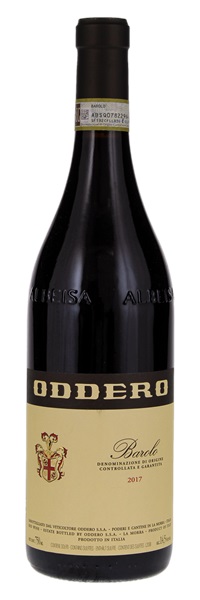Estimate

Initially shy, the nose eventually reveals dried rose, woodland berries and a hint of cedar. Reflecting the vintage, it's full-bodied and generous, doling out dried Marasca cherry, crushed cranberry, star anise and almond liqueur alongside firm, close-grained tannins.
A firm, layered Barolo with plum, tar and licorice character. Medium body and an attractive center palate with tannins that are nicely resolved. Fine and flavorful at the end.
...very pretty, elegant wine... Translucent and so expressive, the Oddero Barolo is wonderfully expressive right out of the gate. Crushed flowers, sweet red berry, mint and cinnamon all grace this super-expressive Barolo.
Cherry, berry, sandalwood and smoke aromas and flavors are allied to a firm structure in this light-bodied red. Dry tannins rule the finish, teaming up with the ripe fruit.
A nose right now marked by lees, but there is brooding and quite pure cherry fruit with a hint of liquorice and a flattering note of new oak. Same purity of fruit on the palate with sappy integrated acidity and with a load of grainy, but well-behaved tannins. Long and supple and then quite firmly structured on the finish, but backed up by plenty of fruit.